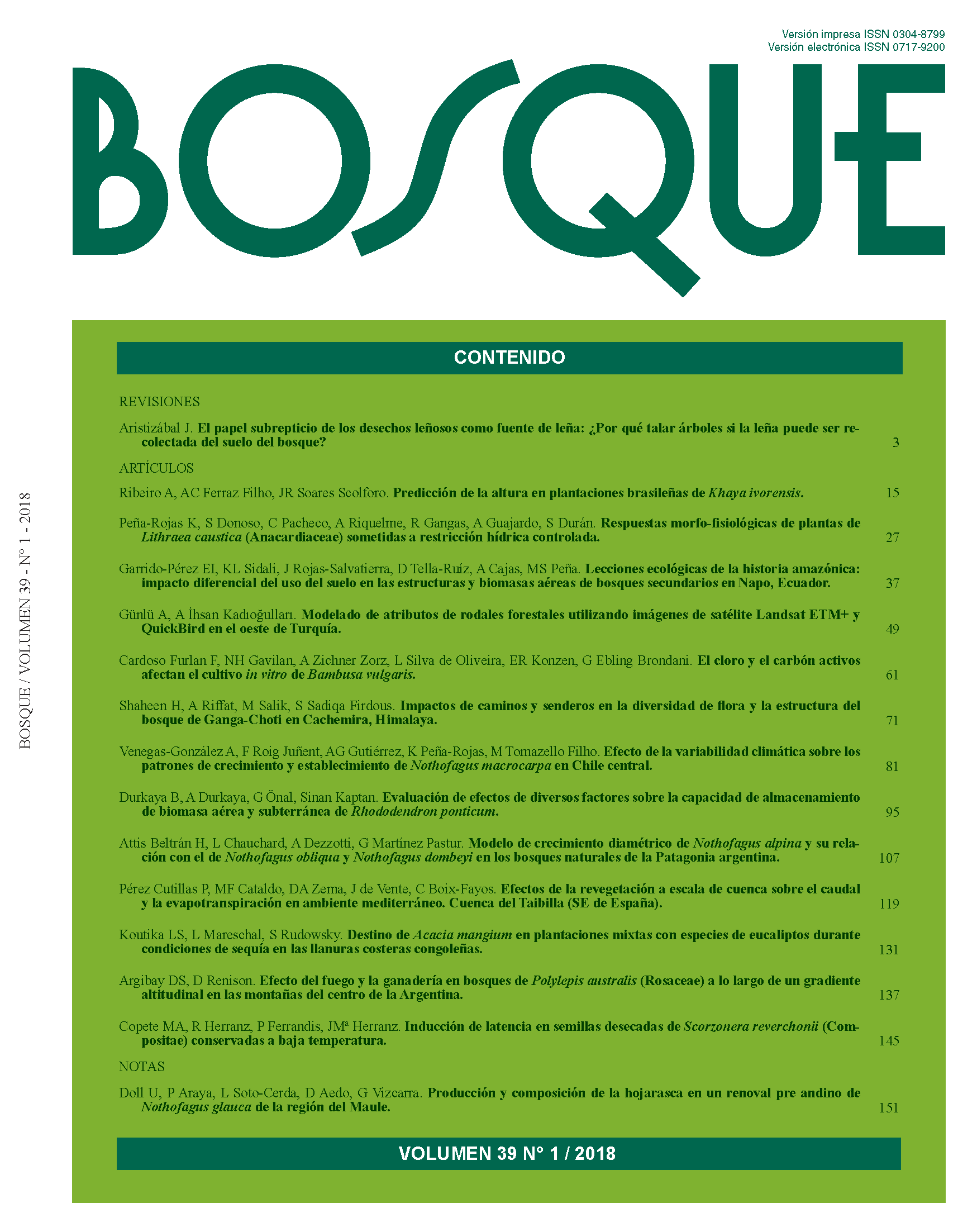Lecciones ecológicas de la historia amazónica: impacto diferencial del uso del suelo en las estructuras y biomasas aéreas de bosques secundarios en Napo, Ecuador
Conteúdo do artigo principal
Resumo
Los bosques amazónicos mitigan el cambio climático, sufren deforestación y regeneran su estructura y funciones por sucesión secundaria. Por ello es necesario estudiar cómo distintos usos del suelo alteran dicha recuperación, y por qué se los deforesta o deja regenerar. Para investigarlo, se inventariaron los árboles (dap ≥ 10 cm), reconstruyendo las historias de uso de cuatro parcelas de una hectárea mediante métodos etnográfico-históricos. Las parcelas A (12-15 años), B (22-25 años) y C (35-37 años) fueron potreros y oligo-cultivos, para alimentar una creciente población asociada a exploraciones petroleras, luego abandonadas por cambios de demanda alimentaria. La parcela D (35-40 años) fue autárquicamente usada para agricultura itinerante (más de 50 especies), luego para extracción de recursos maderables y no maderables durante la sucesión. Los diámetros arbóreos en B y C fueron mayores que en A y D, siendo estas últimas semejantes entre sí. El predominio de árboles delgados en D y A, sugiere que el manejo durante la sucesión “rejuveneció” al bosque en D y que en la Amazonía puede haber bosques más viejos que lo indicado por los diámetros de sus árboles. Algo similar ocurrió para el área basal total y la biomasa aérea, aunque la alta densidad de individuos en D sugiere una vigorosa regeneración de los claros. En conclusión, los distintos usos del suelo alteran la sucesión, los cambios de la demanda y seguridad alimentarias afectan la decisión campesina de permitir que las selvas se regeneren, y la gestión territorial puede optimizarse tomando lo antedicho en consideración.

